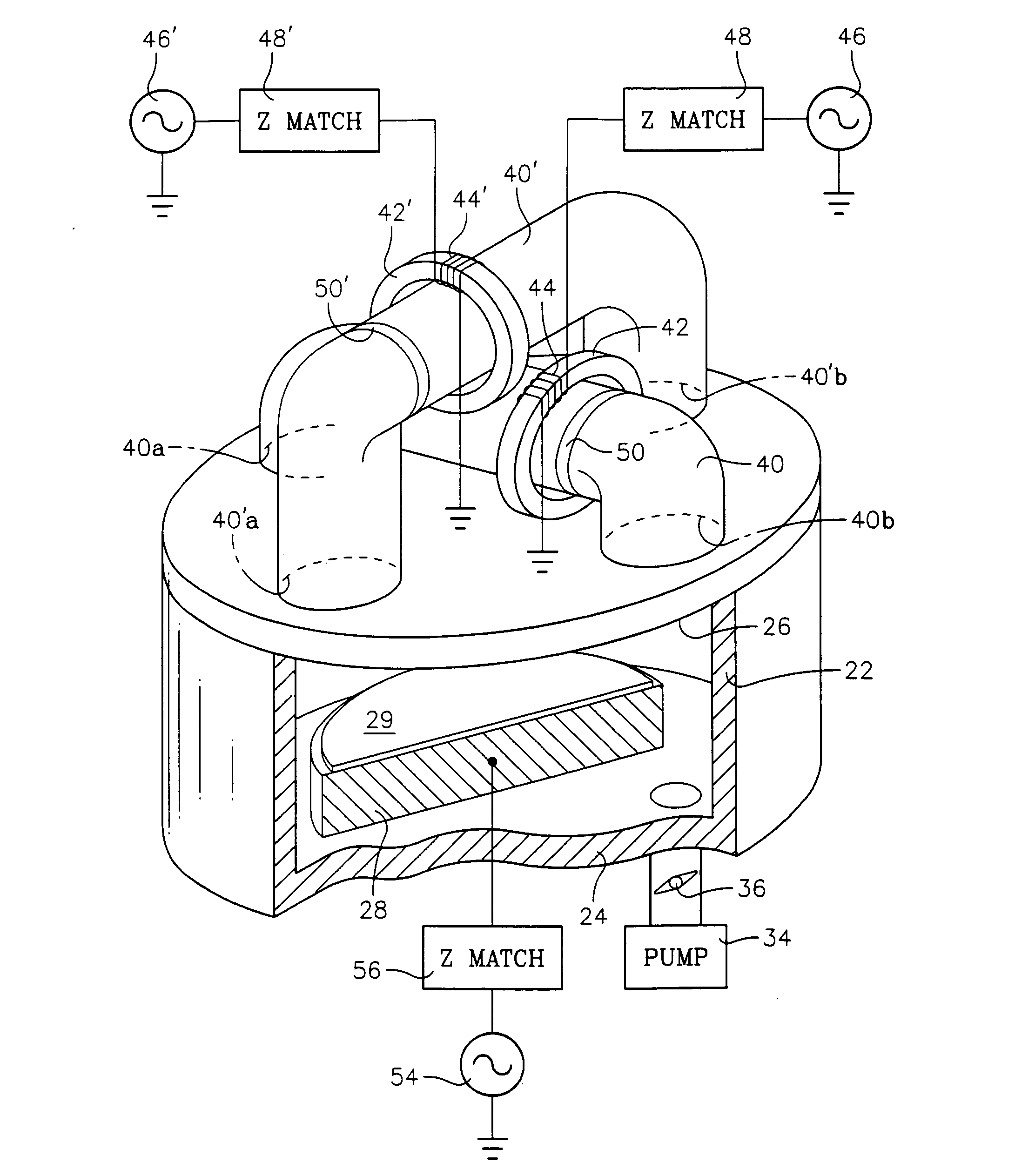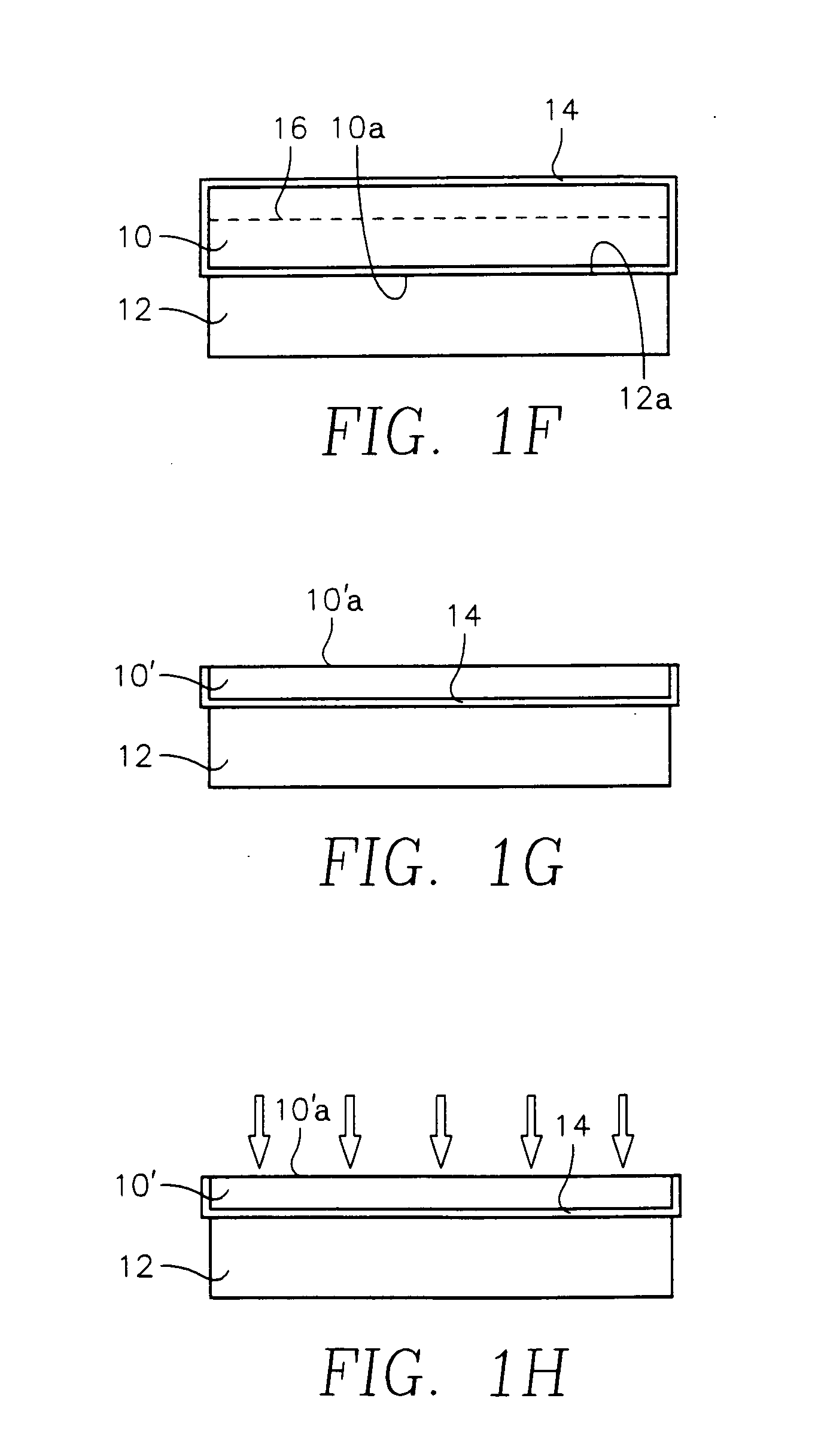Silicon-on-insulator wafer transfer method using surface activation plasma immersion ion implantation for wafer-to-wafer adhesion enhancement
a technology of surface activation and plasma immersion, which is applied in the direction of vacuum evaporation coating, transistors, coatings, etc., can solve the problems of insufficiently meeting the need for higher device speed and power consumption, prone to failure, and less useful structures
- Summary
- Abstract
- Description
- Claims
- Application Information
AI Technical Summary
Benefits of technology
Problems solved by technology
Method used
Image
Examples
Embodiment Construction
[0031]FIGS. 1A through 1H illustrate a sequence of steps in a wafer transfer SOI fabrication process in accordance with a first embodiment of the invention. FIGS. 2A and 2B illustrate the type of torroidal source plasma immersion ion implantation reactor that can be employed in carrying out some of the steps of the SOI fabrication process of FIGS. 1A through 1H. In FIG. 1A, a pair of wafers 10, 12 are provided. The wafers 10, 12 may be identical silicon crystalline wafers of the type employed in the manufacture of semiconductor microelectronic circuits. As one example, the wafers 10, 12 may be formed of intrinsic crystalline silicon and sliced to a thickness of about 2 mm from a cylindrical 300 mm diameter silicon boule along the silicon crystal 110 plane. Their surfaces may be polished to a micron smoothness. In the step of FIG. 1B, the wafer 10 is subjected to a thermal oxidation process to form a silicon dioxide film 14 on the top and back sides of the wafer 10. The thickness of ...
PUM
| Property | Measurement | Unit |
|---|---|---|
| Power | aaaaa | aaaaa |
| Structure | aaaaa | aaaaa |
| Electric potential / voltage | aaaaa | aaaaa |
Abstract
Description
Claims
Application Information
 Login to View More
Login to View More - R&D
- Intellectual Property
- Life Sciences
- Materials
- Tech Scout
- Unparalleled Data Quality
- Higher Quality Content
- 60% Fewer Hallucinations
Browse by: Latest US Patents, China's latest patents, Technical Efficacy Thesaurus, Application Domain, Technology Topic, Popular Technical Reports.
© 2025 PatSnap. All rights reserved.Legal|Privacy policy|Modern Slavery Act Transparency Statement|Sitemap|About US| Contact US: help@patsnap.com



